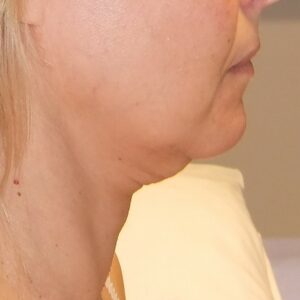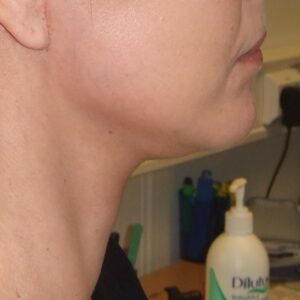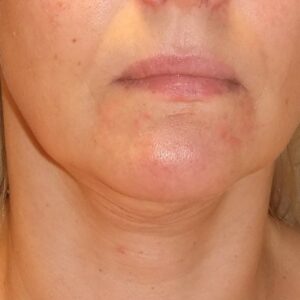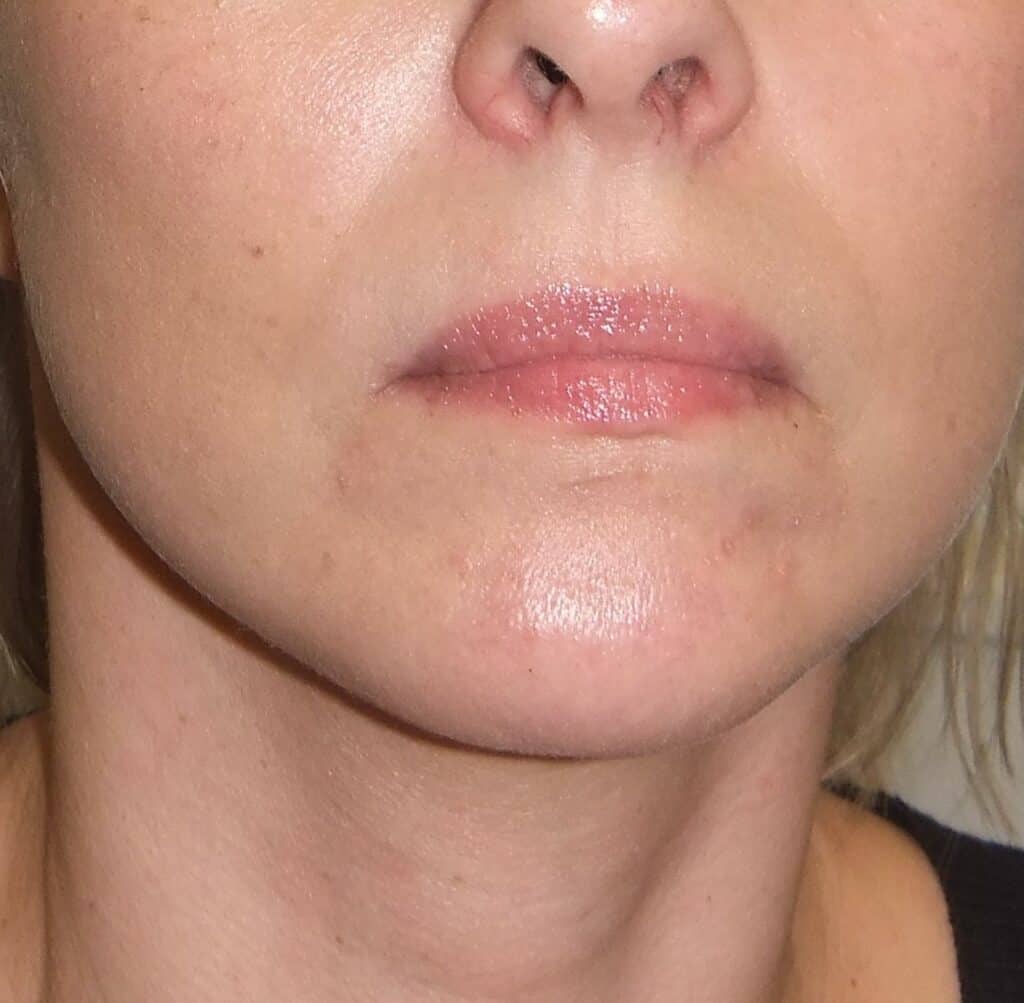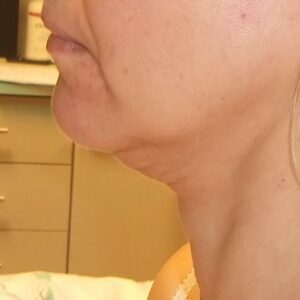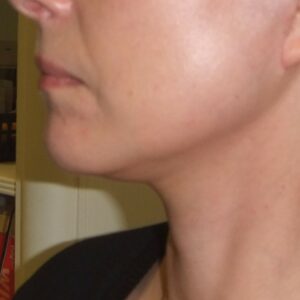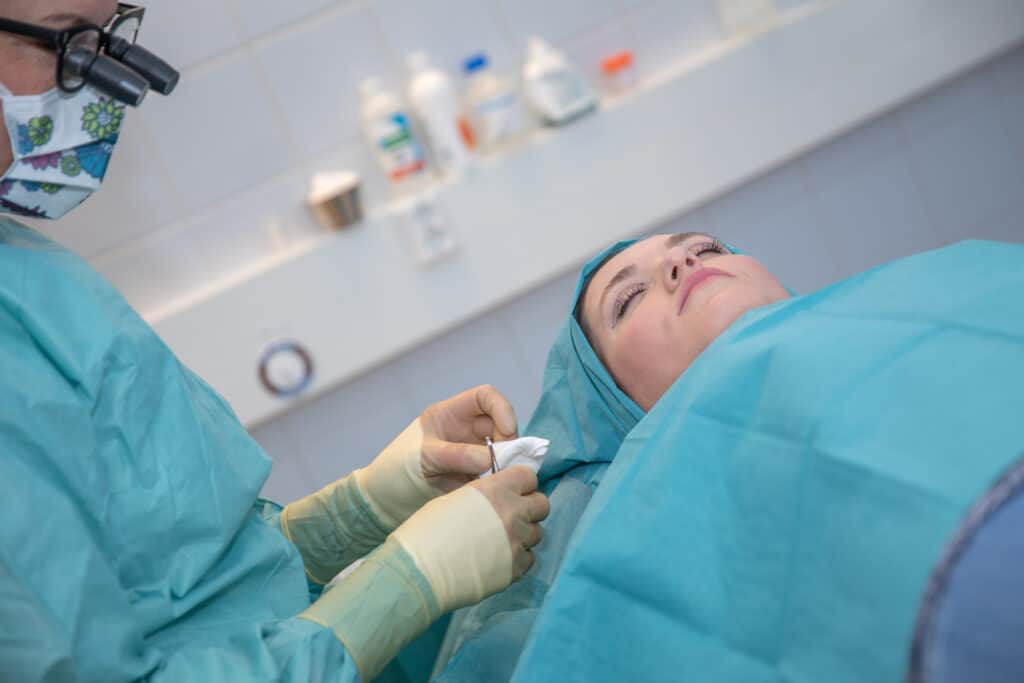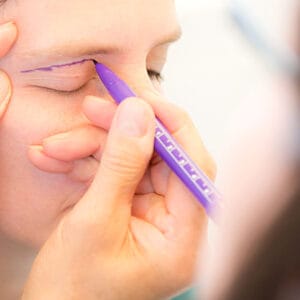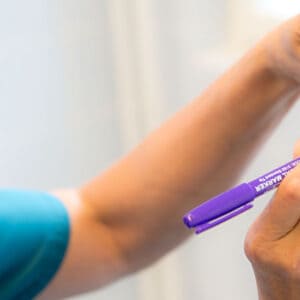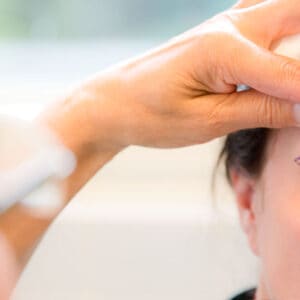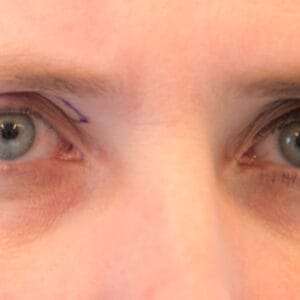Surgical facial care
Face and neck lift
A surgical face lift removes the signs of the changes in the mid-face, neck and forehead skin caused by aging or diseases. This procedure is often combined with eyelid reshaping. There are a lot of surgery options depending on the customer, and therefore it is essential that an individual treatment plan and cost estimate are made at a meeting with the plastic surgeon.
During the surgery, the sagging tissues are moved back and fixed in their proper place. If required, the irregularities and dimples are filled in with fat tissue transfer. To revitalize the skin it is also possible to use the patient’s own PRP (platelet-rich plasma). The surgery can be carried out under sedation or general anaesthesia.
Face lift is a medium surgical procedure and requires a recovery period of 3–4 weeks.
Face lift aftercare
After the surgery the patient is monitored in the recovery unit until the next morning. Possible postoperative haemorrhages always occur during the first evening after the surgery, and blood clots are removed by means of a new surgery if necessary. The price include the care of possible bleeding.
For the first night, the face is covered with a soft absorbent bandage. The next morning it is exchanged for an absorbent cap that should be worn for a week. The patient’s hair is washed in the hospital before the discharge, and later on at home, the patient can take a shower. The area of the incisions can also be showered.
The patient receives the phone number of the nurse on-duty and can call the nurse if required. We also pay special attention to the treatment of pain symptoms. The stitches are removed a week after the surgery. Physical strain, bending down and exposure to too cold or hot air should be avoided for about a week. Otherwise, you can stay in the open air as much as your general condition allows.
The swelling of the face can be prevented by placing ice packs on the operated area and by applying Hirudoid- or Trombosol-ointment on bruised areas. Lymphatic therapy speeds up the disappearance of the swelling. The first lymphatic massage procedure is recommended already before the surgery and the next one should be performed about a week after the surgery.
A facelift may cause stretching of the ramus (branch) of the facial nerve, which results in dysfunction of the nerve. Such an occurrence is quite rare and will disappear within approximately three months.
You are advised to reserve 3–4 weeks for recovery to allow for the bruising and swelling to disappear. You can apply make-up on the face after the stitches have been removed. The final result will be evident 2–3 months after the surgery.
We recommend visiting the operating surgeon after 1 month and then again 3–6 months after the surgery, or earlier if required.
Mid face lift
A mid-facelift removes the drooping around the cheekbones and the lines at the corners of the mouth.
The best and most sustained result can be obtained by means of a SMAS-lift (lasting 10–15 years). The surgical incisions are buried in the patient’s own natural wrinkles while the face reshaping is performed by the repositioning and fixation of the supporting layer covering the facial muscles (SMAS, superficial-muscular aponeurotic system). The technique of the surgery requires special skills and patience as there are major facial nerves under this supporting layer.
Due to the need for special qualifications many surgeons prefer using a MACS-lift (minimal access cranial suspension lift). In this procedure, the supporting layer on the surface of the muscles is not released but just lifted. This provides a good result at first; however, its sustainability cannot be guaranteed. The operation is simpler and faster, and it is suitable when only a small lift is required.
A mid-facelift can be also performed through an incision in the lower eyelids. In this procedure, auxiliary incisions on the temples and the use of the endoscopy technique are required.
A mid-facelift can be carried out under sedation or under general anaesthesia depending on the customer’s wishes.
At our clinic, we prefer using the best method. To achieve the best result it is sometimes possible to combine different methods and complementing them with fat tissue transfer with or without PRP-therapy.
Neck lift
The same SMAS-method (sub-muscular aponeurotic system) that is used for a mid-face lift is employed for a neck lift. In this face reshaping procedure, the stretched subcutaneous neck muscle is corrected and fixed behind the ear with a skin graft. The skin itself is not lifted but the excessive skin is removed. An auxiliary incision under the chin is sometimes required to form a beautiful chin angle. A neck lift always corrects the mid-face zone as well.
A neck lift can be carried out under sedation or general anaesthesia depending on the customer’s wishes.
Forehead lift (brow lift)
Wrinkles on the forehead can be removed by means of a fat filler or gel based on the hyaluronic acid (Perlane, for example); however, if the eyebrows droop so that the upper eyelids fall over the eyes, the best way to correct the situation is by a forehead lift. The eyebrows are lifted by endoscopy through a small incision in the scalp.
The surgery is carried out painlessly under general anaesthesia. The area around the eye will be swollen for several days, and you should reserve at least three weeks for recovery. To speed up recovery after the surgery I recommend using a headband for two weeks.
Eyelid surgery (Blefaroplasty)
Brow lift
As the skin elasticity reduces, the eye corners and eyelids begin to droop. The occurrence of the changes varies from person to person; it depends both on the congenital structure of the eyelids and on genetic factors.
For young people, the best way of eliminating the upper eyelid droop is by a brow lift. Like a forehead lift, it is performed using an endoscopic technique. There will be small scars on the scalp. The procedure is performed under general anaesthesia. After the surgery, the patient stays in the postoperative ward for the night. The area around the eyes will be swollen and there will be bruising for several days. I recommend wearing a headband for two weeks after the surgery. You should reserve three weeks for recovery.
A brow lift can also be performed under local anaesthesia by means of upper eyelid surgery or through an incision along the border the eyebrow. The latter operation leaves scars on the face, and I do not recommend using this method for aesthetic correction.
Upper eyelid surgery
If the distance from the brow to the edge of the upper eyelid is big enough, upper eyelid surgery (blepharoplasty) may be applied.
Blepharoplasty is usually carried out on an outpatient basis under local anaesthesia. Doctors try to minimize the swelling and bruising. Therefore they recommend stopping the use of Primaspan and coenzyme Q-10 preparations two weeks before the surgery. To prevent swelling after the surgery, cold compresses are used. You should avoid bending down and physical strain for at least three days. You should reserve two weeks for recovery.
If necessary, surgery on the upper and lower eyelids may be carried out simultaneously; however, from the point of view of the patient’s recovery, I recommend operating them separately.
Lower eyelid surgery
The reshaping of the lower eyelid is a technically complicated surgery, and bruising and swelling after it are normal. The technique is chosen individually for each customer, depending on whether it is a case of uneven distribution of adipose tissues and/or a case of excessive skin. It is sometimes more sensible to fill the groove under the lower boundary of the eyelid with a fat filler.
The lower eyelid surgery is carried out on an outpatient basis under local anaesthesia. At first, some tension is felt at the outer margin of the lower eyelid; however, it disappears on its own. The recovery takes about three weeks. The final result cannot be seen until three months later.
Nose reshaping – Aesthetic rhinoplasty
Nose reshaping is always customized to each individual and depends on the customer’s needs. The possible result is determined by the nose structure and skin thickness. Therefore, discussing the possibilities of reshaping and planning the surgery with the operating plastic surgeon is of primary importance.
Nose reshaping surgery is carried out under general anaesthesia. The postoperative scars will be invisible. As a rule, a splint is placed on the nose to support it. It is usually worn for a week.
The patient stays the night in the postoperative ward. The stitches and splint are removed during the visit to the doctor a week after the surgery. One should reserve three weeks for recovery.
Ear reshaping (Otoplastics)
Protruding ears are a congenital defect of the earlobes. Sometimes the concha (the bowl of the ear) can also be too big.
The surgery is designed to eliminate the existing defect. It can be carried out under local anaesthesia, or under general anaesthesia, if requested by the customer. Young children are always operated on under general anaesthesia. The surgical scars are behind the ears and are not visible.
It is recommended to wear an elastic headband for two weeks after the protruding ear surgery. The stitches are removed eight days after the surgery. The patient can take a shower and move about without restrictions.

